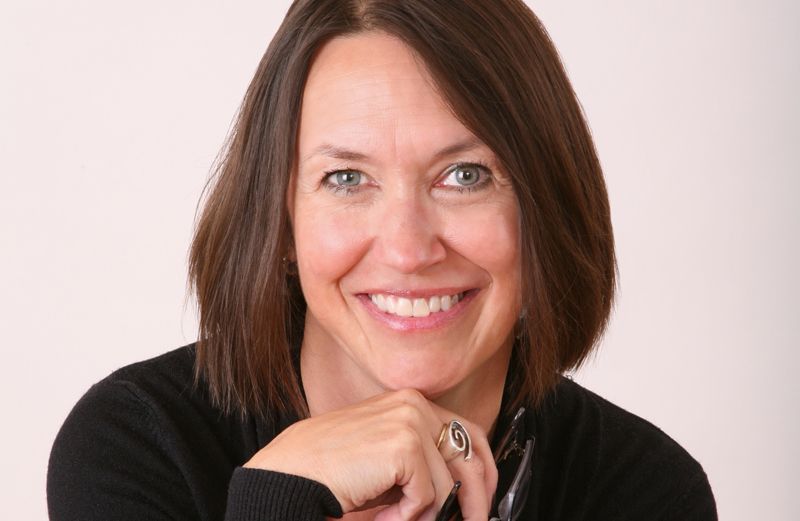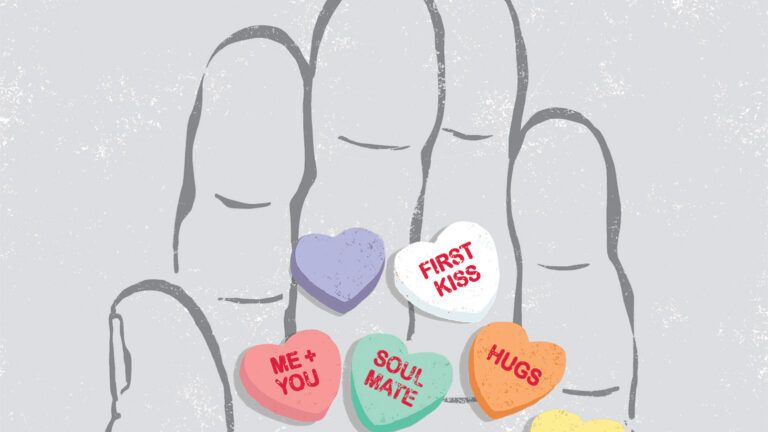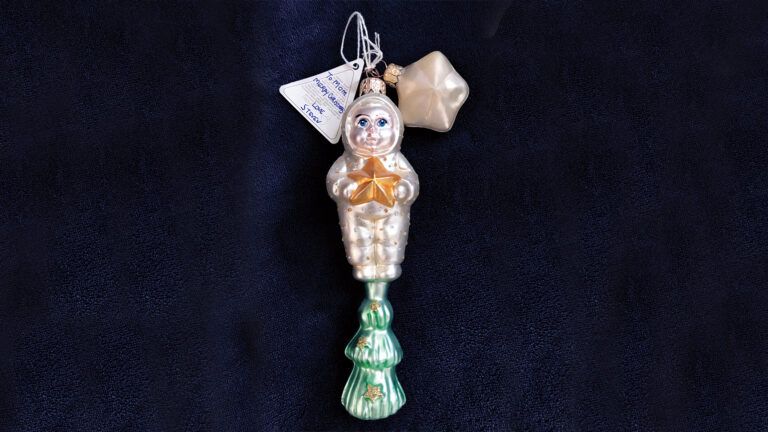While I worked as a chaplain, I also held a part-time job as the youth director at a nearby church, so I spent time with the teens in the cystic fibrosis (CF) unit and with the teens at my church. I assumed that the teens at the church, who had good health, nice families and bright futures, would be happier and more hopeful than the teens at the hospital, who struggled daily with a disease that had no mercy. I was wrong. The kids at the hospital were amazingly upbeat and hopeful.
I called the cystic fibrosis kids the “gang” because I rarely found one of them alone. They treated the unit as their clubhouse. They watched television together, played Ping-Pong in the lounge, and sat on each other’s beds, talking, laughing and flirting with one another.
The only time I could ever determine the toll the disease had on them was when one of the gang would die. These teens knew death was a possibility, and while the doctors worked hard to do all they could to extend their lives, every year one or two of them would die.
I remember the first time I was called to the unit because one teen was very ill. I walked in expecting to see the gang playing Ping-Pong, to smell pizza, and to hear their music blasting in the lounge. Instead, it was quiet. Several kids were in their room with their doors shut—alone. Some were sitting together in their rooms, whispering. None were smiling or laughing.
I went into the room of two of the teens I knew well. They asked me if I knew Julie was very sick. I told them I had come to visit her but thought I would check on them as well. They began telling me what had happened and why and how a person dies from cystic fibrosis. They sounded not like the teens from my church but more like doctors with specialties in cystic fibrosis. It was during times like these I realized just how brave and strong these kids were.
I also checked on the other teens. Most were quiet. They didn’t share their feelings but again spoke scientifically about the disease. It seemed each one was assessing where they were in the course of the disease and trying to figure out when it would overtake them.
After visiting all the teens, I walked to Julie’s room and peeked in. Toni and Julie’s parents and relatives were still there. Julie’s mother was now seated next to her and resting her head on the bed. I wasn’t sure if she was sleeping or praying. I didn’t introduce myself. I did pray, though—a prayer of strength and courage for all who had gathered in Julie’s room.
The next day Toni called to tell me that she wasn’t coming in. “Hey, Leanne, I am wiped out. I was with Julie and her family all night. She died peacefully early this morning.”
“Yeah,” I replied, “I heard she had died. You sound exhausted. Can you go to bed?”
“I want to, but someone needs to check on the kids in the unit. Do you have time to check on them?”
“Of course I do!” I said. “You sleep. I promise to check on them.”
I knew the teens needed to express their feelings after the death of their friend, but I also knew they would need help getting started. As I left for the unit, I grabbed a box of markers and some paper. When I arrived, I found most of the teens, seven of them, sitting in a circle and talking quietly. They looked in shock. I placed the paper and markers in the center of the circle and invited them to draw. I explained that they needed to get their feelings out, and sometimes drawing could be an easier way to express them than using words.
They sat there for a long time, silent and not doing much. Finally one of them took a sheet of paper and some markers and started to draw. That was all it took to motivate the others. In five minutes, they were all drawing. It was quiet; all I could hear was the sound of markers on paper.
After they finished drawing, I suggested that everyone lay their pictures down in the middle of the circle so that we could all see them, and then if anyone felt comfortable sharing, they could. One by one they laid their pictures in the center. What I noticed immediately was that three of them looked quite similar. In fact, they were almost identical.
One teen had drawn a series of question marks in all shapes and sizes. They were different colors and turned every which way on the page. “This is how I feel inside,” he said. “Why did Julie die now, and why do some of the kids with CF die sooner than others? I don’t get it. I mean, I have CF and my sister doesn’t. I’m glad she doesn’t have it, but why do I? It’s unfair.”
Another teen had drawn a cross with Christ hanging on it. Then she’d taken a black marker and scribbled all over the picture. “Here’s my picture. I hope I don’t upset anyone. I used to trust God, but now I’ve seen so many sad things. I don’t even know if there is a God anymore. I scribbled Jesus out. I’m sorry if anyone feels upset about it, but we’re supposed to draw how we really feel, right?”
I nodded.
Then a third teen shared her picture. It was one of the three that looked similar. In it a girl was surrounded by a bright light and standing on top of a small green hill. She was smiling. As she shared her picture, the teen began to blush and said, “I know this might sound weird, but I had a dream last night. I saw Julie. She didn’t say anything, but I think she appeared to me to let me know she was all right. She looked so happy and the light around her was so bright, and the grass was the greenest color I have ever seen. I’m not sure, but I’m pretty sure she was in heaven.”
The look of shock that came over two of the other teens’ faces would have been funny if it had not been such a sad time. One of them said, “I can’t believe this. See my picture?” We all looked at her picture, and it was also of a girl in the midst of a bright yellow light and standing on a green hill. “I had a dream last night too! And this is what I saw. It’s the same as yours! Do you think Julie appeared to us both? Did we see heaven?”
No one spoke. A stunned silence filled the room. Finally one of the teens broke the silence by asking the person who had drawn the third similar picture if she had had a dream as well.
The teen looked embarrassed and said, “No. I couldn’t sleep because I was so upset. I felt afraid that if I let myself go to sleep, I wouldn’t wake up. So I wasn’t sleeping.”
Another teen asked how she knew what the dreams were if she wasn’t asleep. She was quiet for about two minutes and then said, “I saw her, but I was awake. She …” There was a long pause. “She appeared to me. I was trying to read my book, but it was hard because I couldn’t concentrate. I heard a noise, and when I looked up, there she was. You would think I would have been afraid, but she was so beautiful and there was this calm feeling in the room. I sat there looking at her for a long time. We didn’t speak with words, but somehow she told me that I wouldn’t die if I went to sleep, so I should lie down and go to sleep. I lay down, and when I looked up, she was gone.”
One of the teens asked the others, “So does this mean Julie is okay? Does this mean she’s in heaven?” Everyone started talking animatedly, assuring him that the dreams and the vision were proof that Julie was fine.
The atmosphere in the room shifted from the place of sorrow to an atmosphere found at a high school ball game. The teens laughed and chatted, and then someone decided it was time to eat. Life returned to normal. The music came back on, and the microwave hummed again.
I began to gather up the pictures because I wanted to save them. As I picked up the picture of Christ on the cross, the girl who had drawn it came over to me and asked if she could take it and borrow the markers. She sat down at a table, turned the picture over, and once again drew Christ hanging on the cross. Only this time, his cross was placed on a green hill and had light shining all around it. It looked like the pictures of Julie the others had drawn, but instead of Julie standing on the hill, it was Jesus.
“I want to hang this picture in my room,” she said. “When I drew it, I was questioning whether or not God was with me anymore, but now I know! God is with us, isn’t he? God is with all of us no matter what.” And then she looked up and whispered, “Thank you, Julie!”
This article is excerpted from Touching Heaven: Real Stories of Children, Life and Eternity by Leanne Hadley.Used by permission. All rights to this material are reserved. Material is not to be reproduced, scanned, copied, or distributed in any printed or electronic form without written permission from Baker Publishing Group.




